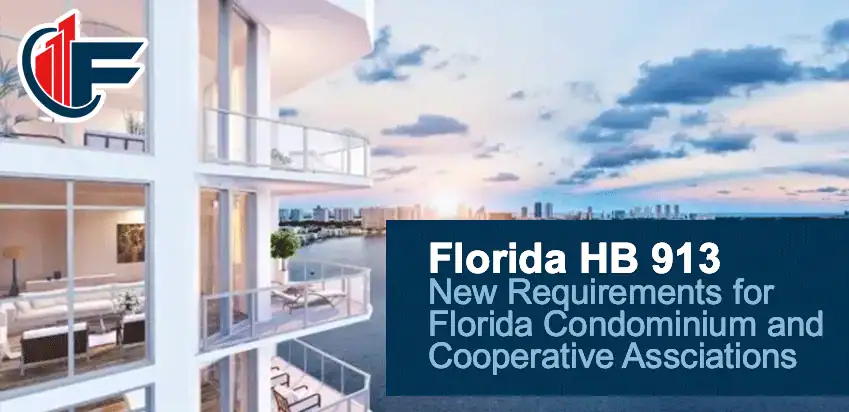As a board member or property manager of a Florida condominium or cooperative association, you’re responsible for safeguarding your community’s safety, financial health, and regulatory compliance amid evolving laws and environmental challenges. With Florida’s unpredictable weather—hurricanes, coastal erosion, and flooding—combined with post-Surfside mandates, the goal is proactive management that avoids surprises like insurance denials, emergency repairs, or resident disputes. Achieving this requires clear understanding of key requirements to ensure long-term resilience and peace of mind.
Challenges for Florida Condo Leaders in 2025
Florida’s regulatory landscape, shaped by the tragic 2021 Surfside collapse, continues to evolve. Senate Bill 4-D (2022) established the statewide framework for milestone inspections and Structural Integrity Reserve Studies (SIRS), launching the most significant condo-safety reforms in decades. Senate Bill 154 (2023) followed with critical clarifications on inspection procedures, SIRS requirements, and compliance timelines, while House Bill 1021 (2024) added further refinements related to governance, reporting, and reserve-funding obligations. Most recently, House Bill 913 (effective July 1, 2025) adjusts deadlines, funding rules, and implementation details to ease compliance while maintaining safety standards. These measures are far more than regulatory checkboxes—they directly shape building safety, long-term financial planning, and association responsibility.
- Regulatory Pressures: In Florida, condominium and cooperative buildings must undergo milestone inspections only if they contain three or more habitable stories, meaning floors intended and used for living space rather than parking, storage, or mechanical functions. The initial milestone inspection must be completed in the year the building reaches 30 years of age—or 25 years if local coastal conditions justify an earlier review—and within 180 days of receiving written notice from the local enforcement agency, with subsequent inspections required every 10 years. These inspections must be performed by a licensed architect or licensed engineer, beginning with a Phase 1 visual, non-invasive assessment of the building’s structural condition; if substantial structural deterioration is identified, the process advances to a Phase 2 inspection, which may include destructive or other invasive testing to evaluate the severity of the issues and necessary repairs. In addition to milestone inspections, affected buildings must also complete a Structural Integrity Reserve Study (SIRS)—a comprehensive evaluation and funding plan for critical structural components—at least once every 10 years, with initial completion deadlines set for December 31, 2024 (extended to December 31, 2025 for some associations). A SIRS must be performed by a licensed architect, licensed engineer, reserve specialist with a CAI credential (RS), or a professional reserve analyst with an APRA credential (PRA), and must provide estimated useful lives, replacement costs, and required reserve funding levels for essential structural elements. Importantly, any building with fewer than three habitable stories—such as a structure with two residential levels over a non-habitable parking floor—is exempt from both milestone-inspection and SIRS requirements.
- Operational Stressors: Questions like “How do we integrate milestone inspection findings into reserves?” or “Will this require special assessments?” create anxiety. Hidden defects could result in costly emergencies, while underfunding erodes trust and invites complaints.
- Broader Concerns: Navigating this shouldn’t be overwhelming. Dedicated leaders deserve accessible, up-to-date resources to protect communities without excessive burden.
Key Differences at a Glance
To clarify, here’s a comparison of Milestone Inspections and SIRS based on current Florida law (as of November 2025):
|
Aspect |
Milestone Inspection |
|
|
Purpose |
Evaluate structural safety through visual (Phase 1) and potentially invasive (Phase 2) assessments to identify deterioration. |
Physical and financial analysis to project costs, lifespans, and funding needs for repairs/replacements of key SIRS components. |
|
Scope |
Focuses on load-bearing elements (e.g., foundations, walls, balconies); identifies immediate risks. |
Covers structural items plus systems like roofing, plumbing, electrical, waterproofing; estimates reserves. |
|
Frequency |
Initial at 30 years (25 for coastal); every 10 years thereafter. |
Initial by Dec. 31, 2025; updated every 10 years (or sooner if needed). |
|
Who Performs It |
Licensed professional engineer or architect. |
Licensed architect, licensed engineer, reserve specialist with a CAI credential (RS), or a professional reserve analyst with an APRA credential (PRA) |
|
Requirements |
Submit to local building officials and DBPR; may trigger repairs. |
Distribute SIRS to all unit owners, file SIRS compliance form with DBPR, begin budgeting according to the SIRS, maintain SIRS as an official record, keep SIRS up to date. |
|
Deadlines (2025) |
For buildings reaching threshold by Dec. 31, 2024: Complete by Dec. 31, 2025. |
All qualifying associations: Complete and adopt by Dec. 31, 2025. |
|
Consequences of Non-Compliance |
Potential evacuations, fines, or loss of habitability certification. |
Insurance denials, special assessments, DBPR penalties. |
This table highlights how these complement each other—inspections inform the SIRS for better budgeting.
Your Trusted Partner: FPAT, Florida’s Reserve Study Specialists
At FPAT, we specialize in helping Florida condo and co-op associations navigate these requirements. As local experts familiar with coastal corrosion, hurricane impacts, and community association dynamics, we’ve assisted numerous boards in delivering compliant SIRS reports aligned with the Florida Building Code and recent legislation like HB 913. While many firms offer these services, our focus on tailored, actionable plans sets us apart—we’re committed to being your collaborative ally.
A Streamlined Path to Compliance
Here’s a practical, step-by-step approach to address both requirements effectively:
- Assess Your Needs: Review your building’s age, habitable story height, location, and prior inspections. Consult DBPR resources or legal counsel to confirm applicability.
- Schedule Inspections if Due: Engage a licensed professional for milestone inspections. Use findings to identify urgent repairs.
- Conduct or Update SIRS: Hire a qualified specialist (like FPAT) for a comprehensive study. Incorporate 2025 updates, such as detailed funding schedules and potential delays under HB 913.
- Implement and Budget: Present the SIRS to owners, adjust reserves in your 2026 budget, and monitor ongoing compliance.
For FPAT clients, we start with a free consultation, deliver a customized proposal in 1-2 days, and provide a robust report that integrates milestone data.
Act Now—With Deadlines Approaching
With the December 31, 2025, deadline looming, don’t delay. Contact FPAT today for your SIRS or download our free guide: ‘Navigating Florida’s 2025 SIRS and Milestone Requirements’ for immediate, updated insights. For general advice, visit DBPR’s website or explore certified providers.
The Risks of Delay or Confusion
Ignoring or mixing up these mandates can have severe repercussions:
- Denied insurance coverage, exposing your community to storm-related losses.
- Underfunded reserves leading to unpopular special assessments and board instability.
- Regulatory scrutiny, legal fees, or structural risks endangering residents.
- Persistent stress undermining your leadership effectiveness.
Building a Resilient Future
Envision success: A clean milestone inspection catches issues early, while a thorough SIRS ensures sustainable funding. Your property withstands Florida’s elements, compliance is seamless, and residents value the transparency—strengthening community bonds.
From Burdened to Confident Leader
Transform from overwhelmed by post-Surfside and 2025 updates to empowered, with expert support like FPAT guiding you to a secure, compliant future.
For more details on our services, visit our services page or contact us. Subscribe to our blog for ongoing Florida condo law updates. Always verify with professionals, as laws may continue to evolve.






